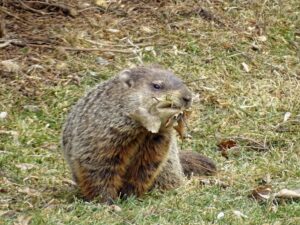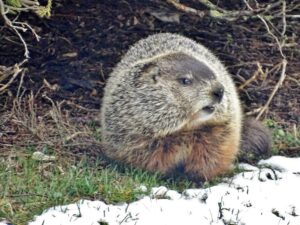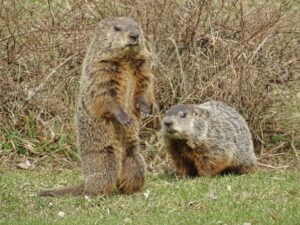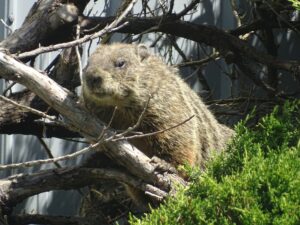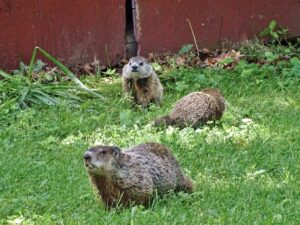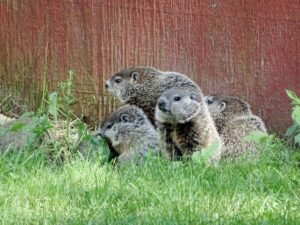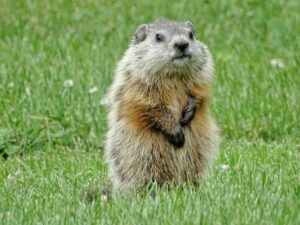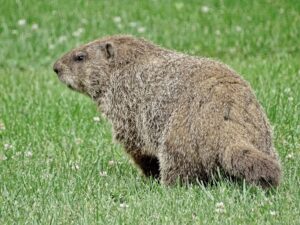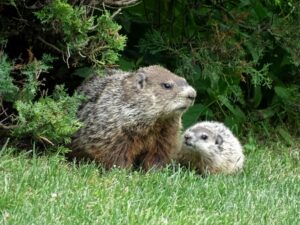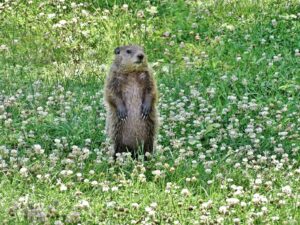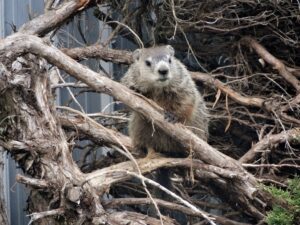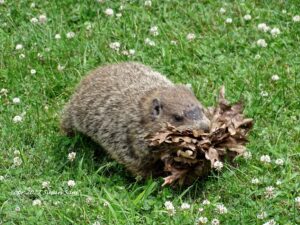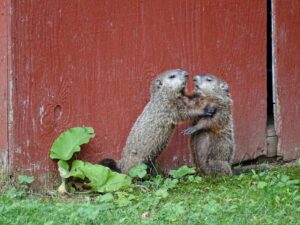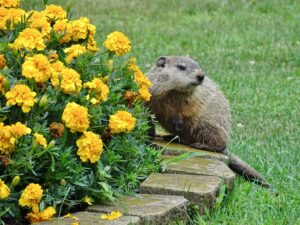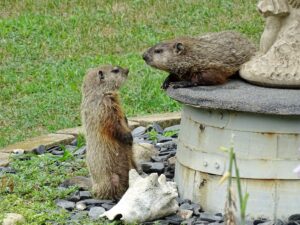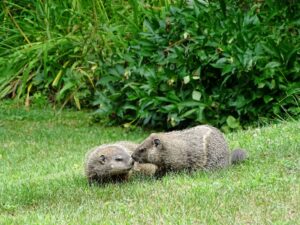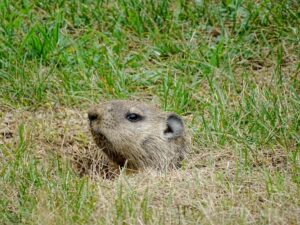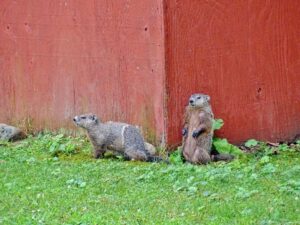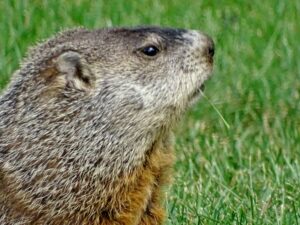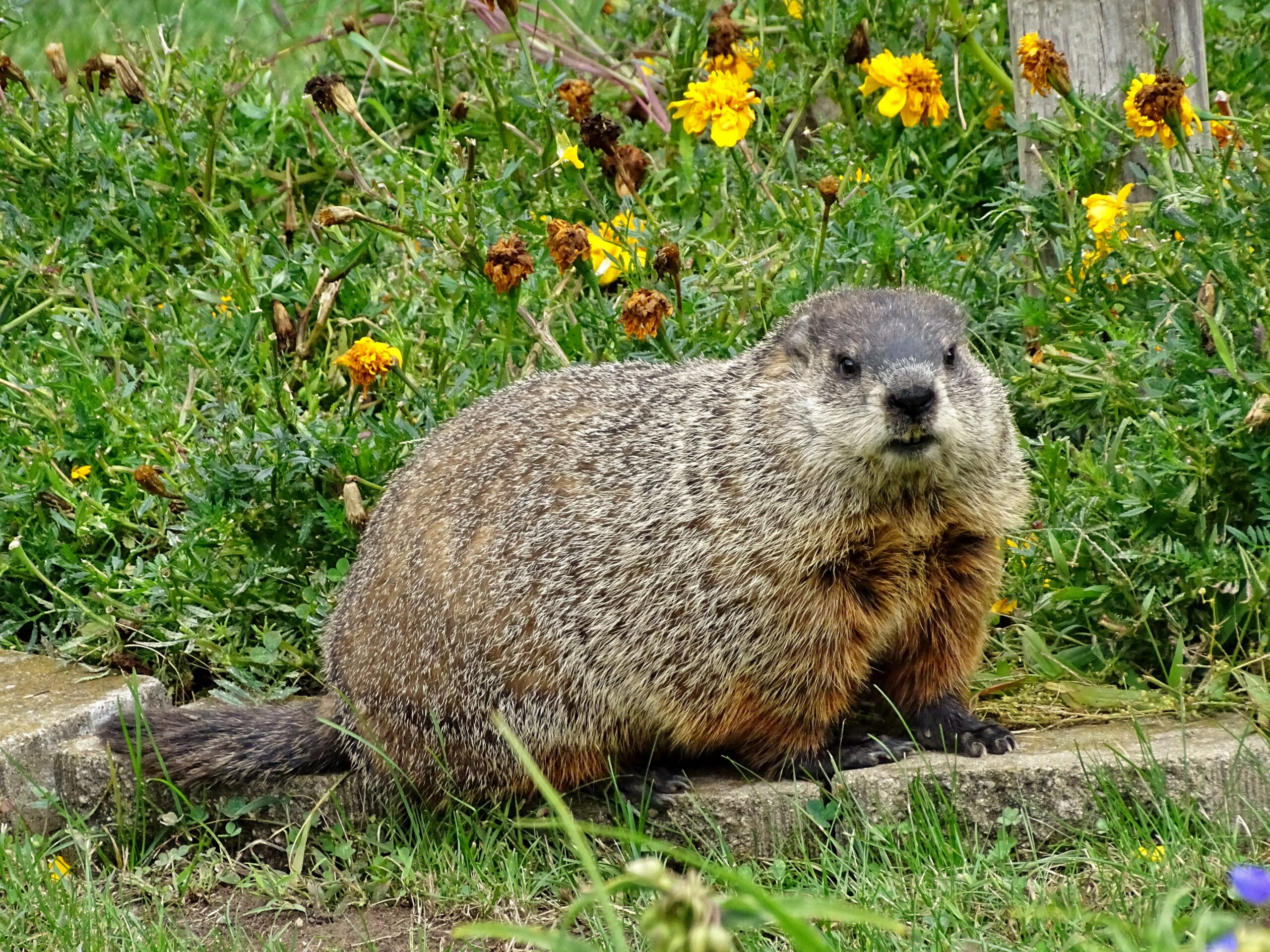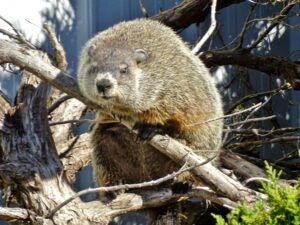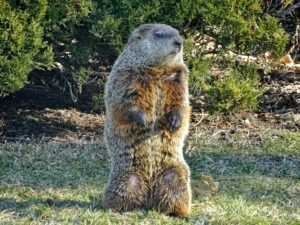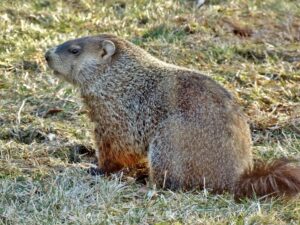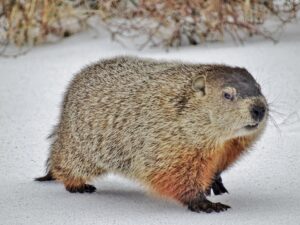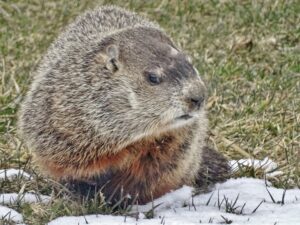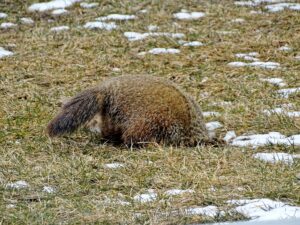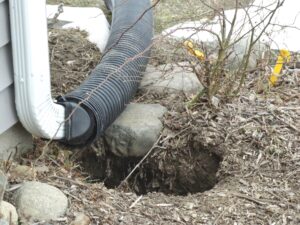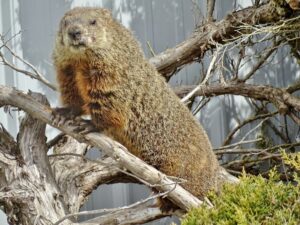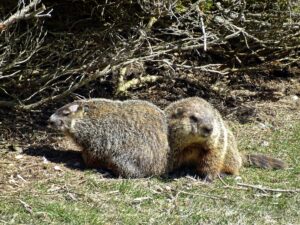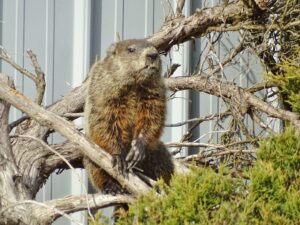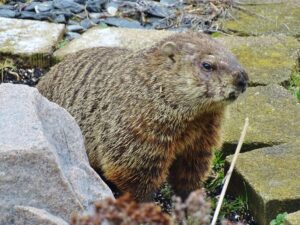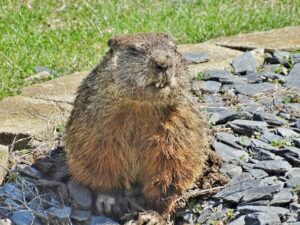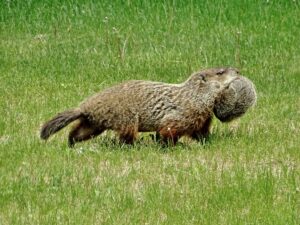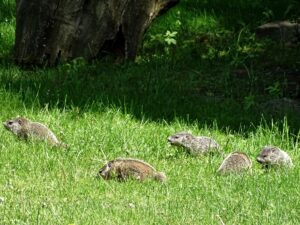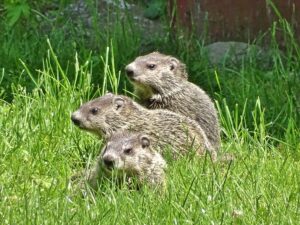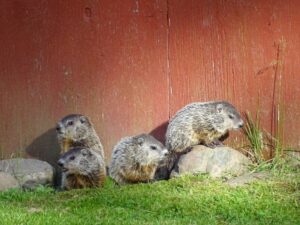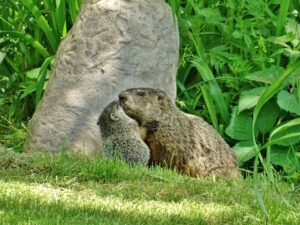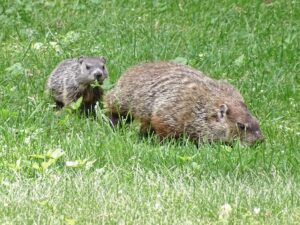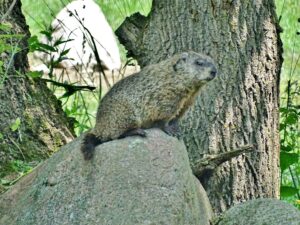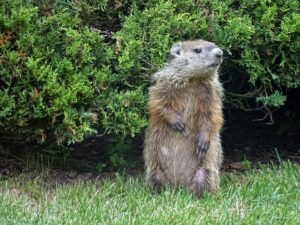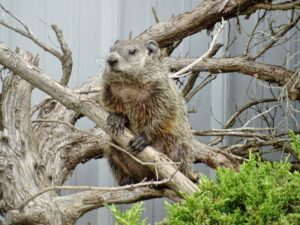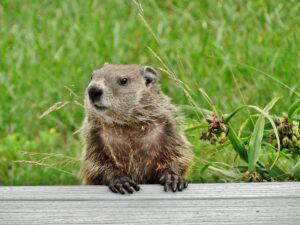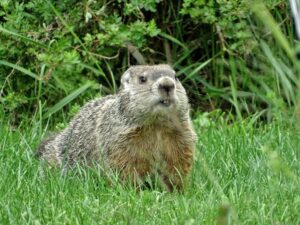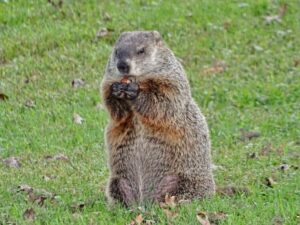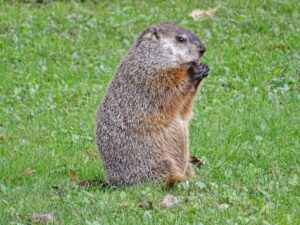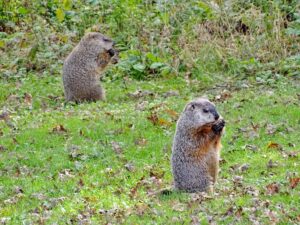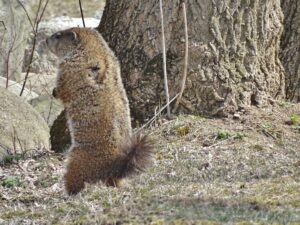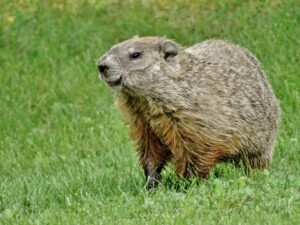Welcome to Woodchuck Wonderland
2021-2023 Photos And Review
NEWS
The groundhog story from 2020 continued in 2021 and is the topic of our second book, “A Most Unusual Groundhog Story”, published in 2022. Also, in 2022, I established a site with Fine Art America where various items featuring our Woodchuck Wonderland groundhogs and other wildlife can be purchased. In April 2022, we published a 10-page paper, “Observations of the behavior and role of the male woodchuck (Marmota monax )” available here.
2021
Earlier months of 2021 groundhog activities are included in our second book. In the summer of 2021, a juvenile groundhog arrived. We named this chuck Winnie. A new hole dug near the service door of the barn led to one of the barn burrows. This hole isn’t visible inside the barn, so trail cameras can’t capture the chucks going in and out of this hole. Winnie found that climbing up into the bushes next to the barn was a great place to observe. We continued to see Winnie into October.
2022
In 2022, the first groundhog was sighted on February 24th and identified as male Milo, returned from 2021. Milo hung around the barn and did some housekeeping. Winnie emerged from hibernation in later March with a deformed right ear. Now a yearling, she and Milo became mates and were parents to four young. Unlike in past years, Winnie’s babies emerged from the shed burrow, suggesting that she gave birth to them there instead of in the barn. Usually, we observe babies emerging from the natal burrow in mid to late May. Our first sighting of Winnie’s babies occurred in the beginning of June,
BABIES MOVE TO BARN
On June 11th, Winnie mouth carried the babies to the barn burrow. One of the babies we named Limper was a runt with a deformed left leg. We initially thought Limper had injured a foot or leg but discovered the limp was due to a congenital disability. Much of the focus in 2022 was observing Limper’s activities and the relationship between Limper and other family members. Limper could stand up, move around the yard, gather burrow material, climb onto boulders, and eat. Limper could run, though odd and not fast like the other babies. We estimated Limper traveled up to about 90 feet from the barn. .Eventually, Limper began traveling further with siblings and mom, Winnie. We last saw Limper in August.
MILO
Milo was observed throughout the season patrolling and helping with burrow maintenance. We also watched him mark rocks where babies played and around burrow entrances. Sometimes, we saw him foraging near Winnie. We observed chases not infrequently initiated by Winnie. She not only chased Milo but also rabbits and occasionally her babies.
SEASON ENDS
Our last sighting of Winnie occurred in early September. We observed Milo into late September. One of Limper’s siblings, Waddles, continued to be seen through October and was last seen in the barn in early November.
2023
FIRST SIGHTINGS
Our first sighting of a groundhog this year occurred when we were surprised by an awakened chuck in our barn on February 10th. The following day, we saw Milo outside. On February 12th, we identified Waddles in barn camera photos. The early awakening suggests Waddles may be a male. In later February, we began seeing an unknown woodchuck thought to be a male. The first sighting of Winnie occurred on March 12th.
HOLES
On March 2nd, we saw new diggings next to our house—one hole at the corner of our house, the other under our bedroom window. Usually, we can put a reasonably quick stop to the digging, but in this case, the chuck doing the digging was persistent and determined to have dens in both areas. As we filled a hole, the chuck would dig another nearby. Because of winter weather, repeated fill-in work was a slow process. By May, we had successfully filled in the corner hole. We laid chicken wire and added a faux stone and tunnel. The stone provided elevated observation, and the tunnel allowed a quick hiding place from predators. For the area under our bedroom window, we threw deterrents like Irish Spring soap in the hole, filled it, and then surrounded it with logs. It was a temporary fix until we had time to do a more thorough job. Well, Milo found a spot at the base of the bush and dug a hole there, tossing out deterrents in the process. We eventually filled the hole and put an end to the digging.
Last year, one of the juveniles dug a hole in the yard near the deck. We didn’t fill it in. Winnie determined another exit hole was needed.. I was looking out the window and saw the earth move. As I continued observing, Winnie emerged out of her newly dug hole. This hole was not in a tolerable area so we successfully filled it. We eventually learned a predator dog and a red fox were in the area. We suspected the new holes were a defensive response to the predators.
MAY-OCTOBER
On May 15th, we saw the first baby had emerged from the natal den in a trail camera photo. On May 21st , we observed Winnie mouth-carrying the babies from the barn to the shed. A few days later, we were able to confirm five offspring. Like the dozens of young we have observed over the years, these babies found abundant places to explore, play, climb, and eat. Milo continued watching over the territory, marking, and helping to protect and maintain the burrows. We observed him in areas close to the young, and he occasionally interacted with them. We observed Milo and Winnie sometimes foraging together. In September, we watched them eating acorns in our side yard. A juvenile we named Auggie remained after the others left and was observed late in September. Our last sighting was of Milo in early October.
During the season, we observed unknown chucks, probably males. One of them we named Smiley. They were seen on multiple occasions but their role needed to be clarified. DNA testing would be helpful, but we aren’t equipped for this level of study.
Susan Sam
Woodchuck Wonderland
